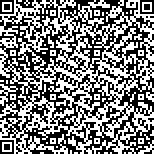本文已被:浏览 870次 下载 703次
投稿时间:2024-01-19
投稿时间:2024-01-19
中文摘要: 自20世纪60年代人类首次利用流产胎儿组织建立人二倍体细胞系(HDCs)以来,人胚胎来源的细胞就被广泛应用于生物医学研究领域,为提高人类健康水平作出了重大贡献。近年来,包括人胚干细胞在内的人多能干细胞在再生医学领域展现出巨大的治疗潜力,并受到各国政府和社会公众的高度关注。同时,由于历史文化、宗教信仰、伦理道德等多方面的因素,人胚胎来源细胞的研究和应用一直存在较大争议。文章通过介绍人胚胎来源细胞在生物医药领域研究应用的历史和进展,探究不同国家监管制度的演进,以期为完善我国对该领域的监管框架和技术要求提供有益参考。
Abstract:Since the establishment of the first human diploid cell line derived from aborted fetal tissue in the 1960s, human embryoderived cells have been widely used in biomedical field and significantly contributes to improving human health. In recent years, human pluripotent stem cells, including human embryonic stem cells (hESCs), have shown great therapeutic potential in regenerative medicine, and thus received great attention from governments and the public. However, due to various factors such as history, culture, religious beliefs, ethics and morality, research and application involving human embryo-derived cells have been controversial worldwide. This study explores the history and progress of human embryo-derived cells in the field of biomedicine, and analyzes the evolution of regulatory systems in different countries, with the aim of facilitating the improvement of China’s regulatory framework and technical requirements in this field.
文章编号: 中图分类号: 文献标志码:
基金项目:
| 作者 | 单位 |
| 高建超1 | 国家药品监督管理局药品审评中心 北京 100022 |
| 彭耀进2,3,4 | 中国科学院动物研究所 北京 100101 中国科学院大学 北京 100049 北京干细胞与再生医学研究院 北京 100101 |
| 韦薇1 | 国家药品监督管理局药品审评中心 北京 100022 |
| 鲁爽1 | 国家药品监督管理局药品审评中心 北京 100022 |
| 高晨燕1* | 国家药品监督管理局药品审评中心 北京 100022 |
引用文本:
高建超,彭耀进,韦薇,鲁爽,高晨燕.人胚胎来源细胞在生物医药领域的应用历史及研究和监管进展[J].中国科学院院刊,2024,39(2):388-396.
GAO Jianchao,PENG Yaojin,WEI Wei,LU Shuang,GAO Chenyan.Panorama of human embryo-derived cells in biomedicine and progress in their research and regulation[J].Bulletin of Chinese Academy of Sciences,2024,39(2):388-396.
高建超,彭耀进,韦薇,鲁爽,高晨燕.人胚胎来源细胞在生物医药领域的应用历史及研究和监管进展[J].中国科学院院刊,2024,39(2):388-396.
GAO Jianchao,PENG Yaojin,WEI Wei,LU Shuang,GAO Chenyan.Panorama of human embryo-derived cells in biomedicine and progress in their research and regulation[J].Bulletin of Chinese Academy of Sciences,2024,39(2):388-396.


